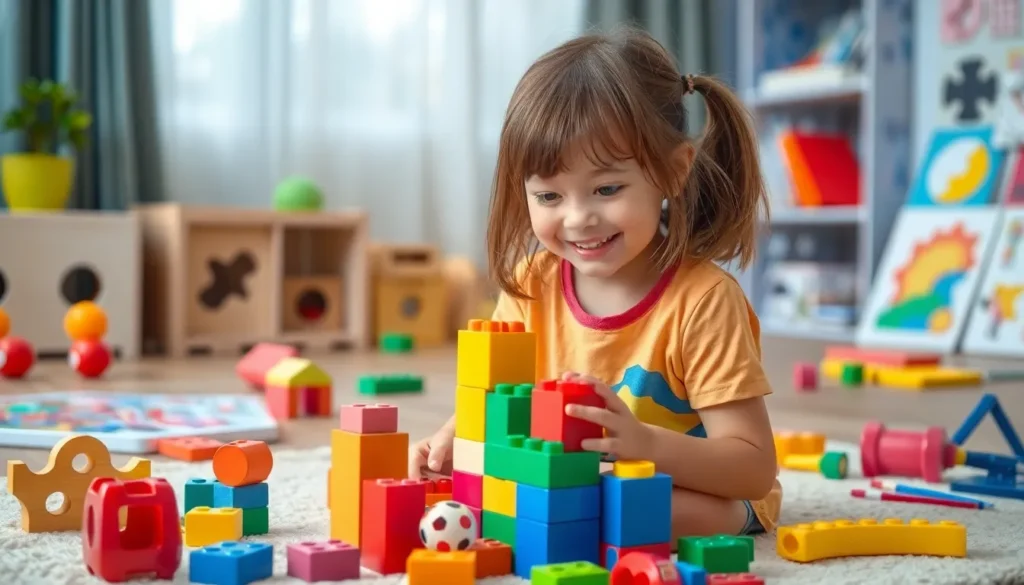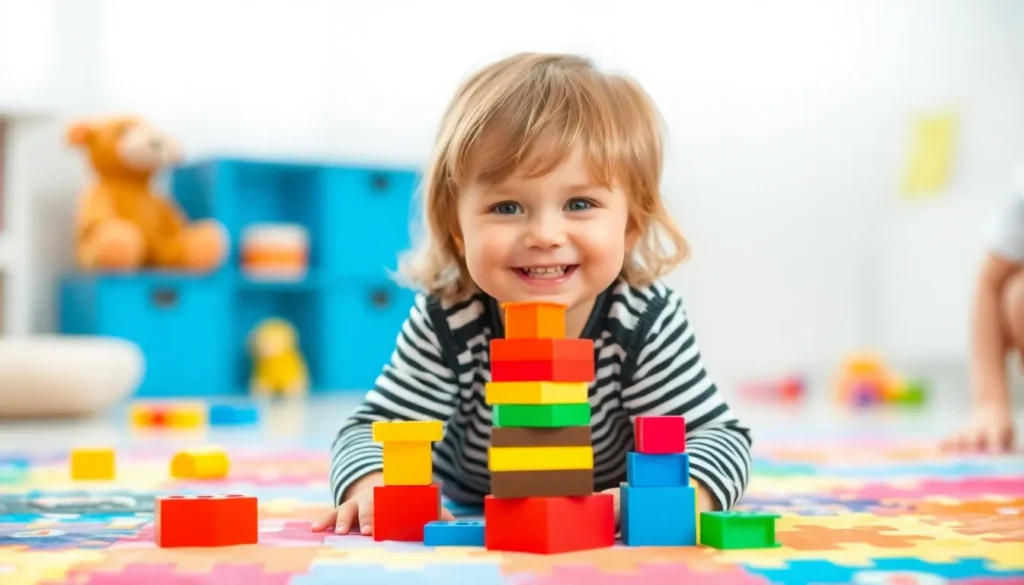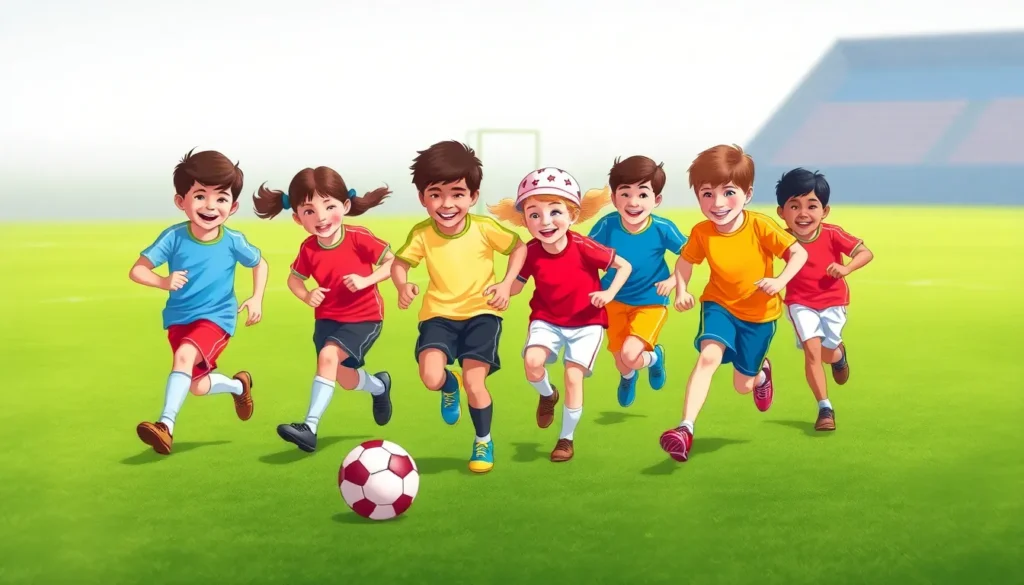When the weather outside is frightful and the kids are bouncing off the walls, indoor sports become the ultimate lifesaver. Forget about the couch potato routine; it’s time to turn that living room into a mini-Olympics! Whether they’re dribbling a basketball or perfecting their ninja moves, indoor sports keep kids active, engaged, and out of trouble—mostly.
Table of Contents
ToggleBenefits Of Indoor Sports For Kids
Indoor sports offer numerous advantages for children, especially when outdoor activities aren’t viable. Engaging in these activities promotes overall well-being and keeps kids active.
Physical Health
Participation in indoor sports helps improve cardiovascular fitness. Playing games like soccer or basketball increases heart rate and endurance. Developing strength occurs with activities like gymnastics or martial arts. Flexibility improves through practices such as yoga. Additionally, indoor sports can enhance coordination and balance, crucial for children’s growth. A consistent routine of physical activity significantly lowers the risk of obesity, improving children’s overall health.
Mental Well-Being
Engaging in indoor sports fosters social interaction and teamwork. Through playing games, children learn vital communication skills and cooperation. Activities boost self-esteem as kids achieve personal and team goals. Stress relief occurs when kids release pent-up energy. Moreover, structured play exposes children to routine and discipline, benefiting their daily lives. Indoor sports can also enhance cognitive functions, providing mental stimulation that complements academic pursuits.
Popular Indoor Sports Activities
Indoor sports activities provide children with engaging alternatives for staying active. With various options available, kids can enjoy fun and physical challenges regardless of the weather.
Basketball
Basketball serves as a high-energy indoor sport for children. This game emphasizes teamwork, coordination, and agility. Dribbling, shooting, and passing drills improve skills while encouraging social interaction. Kids can play on mini-courts or even adapt the game in smaller spaces like living rooms. Engaging in basketball not only enhances physical fitness but also builds self-confidence through practice and achievement.
Swimming
Swimming stands out as another popular indoor activity for kids. In a controlled environment like a pool, children can develop essential swimming skills while enjoying water play. Safety remains a priority, and parents often supervise their children for added security. Regular swimming sessions promote cardiovascular health, flexibility, and muscle strength. Additionally, kids learn about water safety, which is invaluable for their overall well-being.
Volleyball
Volleyball serves as an exciting indoor sport that encourages teamwork and communication. Kids learn to serve, set, and spike, developing hand-eye coordination and agility. Playing volleyball in a gym or recreational center allows for safe competition and skill-building. With variations like beach volleyball or sitting volleyball, children can enjoy different styles while remaining active. Participation in volleyball fosters social skills and builds friendships through collaborative play.
Choosing The Right Indoor Sport
Selecting the right indoor sport for kids involves considering various factors. Parents must assess age appropriateness and skill level to ensure a positive experience.
Age Appropriateness
Understanding age appropriateness is essential when choosing an indoor sport. Young children often benefit from activities that promote basic motor skills, such as simple games like tag or mini basketball. School-aged children may thrive in organized sports like soccer or volleyball, where teamwork becomes crucial. Pre-teens face growing opportunities for more complex sports, such as gymnastics or martial arts. Each age group requires specific activities that match their developmental stage, allowing for both enjoyment and skill acquisition.
Skill Level
Evaluating skill level plays a key role in selecting an indoor sport. Beginners may find enjoyment in less competitive environments, such as swimming or beginner basketball classes. As kids build confidence, they can transition to more challenging options that emphasize teamwork and strategy. Coaches or instructors can further assist in assessing skill levels and providing appropriate guidance. Options should encourage gradual advancement, ensuring children feel successful and motivated throughout their indoor sports journey.
Tips For Encouraging Participation
Encouraging children to participate in indoor sports requires creativity and engagement. Several methods can boost their interest in physical activities.
Creating A Fun Environment
Transforming spaces into engaging arenas enhances enjoyment. Bright colors and inviting decorations can motivate kids. Activities should incorporate music or games to maintain excitement. Consider using props like soft balls, hula hoops, or inflatable equipment to make playtime enjoyable. A friendly atmosphere impacts children’s willingness to join in. Seeking feedback from kids helps tailor activities to their preferences. Favorable experiences keep them returning for more.
Involving Parents
Active parental involvement elevates excitement levels. Watching or participating alongside children creates shared experiences that strengthen bonds. Parents can organize fun competitions or family tournaments, enhancing collective enjoyment. Providing encouragement during activities boosts kids’ confidence and motivation. Scheduled family play sessions contribute to developing a routine around indoor sports. Parents committing to their children’s interests fosters a supportive environment that nurtures participation. Collaboratively setting goals provides a focal point, allowing everyone to celebrate achievements together.
Indoor sports offer a fantastic way for kids to stay active and engaged, regardless of the weather. By incorporating these activities into their routines, children can enjoy numerous physical and mental benefits that contribute to their overall development.
Parents play a vital role in creating an inviting space for these sports and fostering an environment that encourages participation. With creativity and active involvement, families can transform indoor sports into an enjoyable experience that promotes fitness, teamwork, and self-esteem.
Ultimately, embracing indoor sports not only keeps kids moving but also helps them develop essential life skills that will benefit them for years to come.









